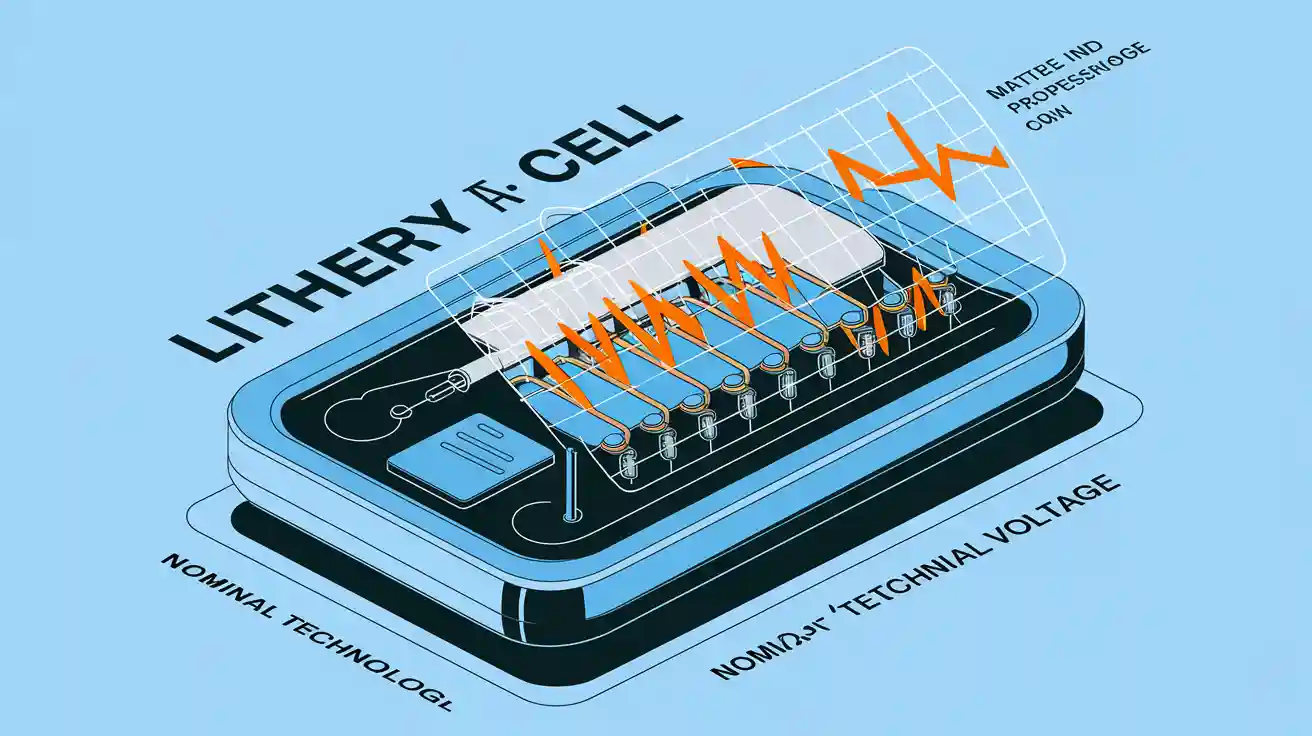
一句话定义
Nominal voltage is the standardized average voltage a battery cell or pack is rated at during typical operation, serving as a reference point for system design and device compatibility.
详细说明
Nominal voltage (sometimes called “named voltage”) represents the average voltage a battery maintains throughout most of its discharge cycle. It is not the maximum (fully charged) or minimum (fully discharged) voltage, but rather a convenient value that simplifies battery selection, system integration, and product labeling. For example, a lithium-ion cell is typically labeled as 3.6V or 3.7V, even though its actual voltage ranges from about 4.2V (fully charged) to 3.0V (fully discharged). This convention is defined by international standards such as IEC 61960 and is widely adopted across the battery industry (电池大学).
Key Components of Nominal Voltage
- Battery Chemistry: The nominal voltage is determined by the electrochemical properties of the battery’s anode and cathode materials. For instance, Li-ion (LiCoO₂/graphite) cells are rated at 3.6–3.7V, while LiFePO₄ cells are rated at 3.2V.
- Discharge Curve: The nominal voltage is typically set near the midpoint of the battery’s discharge curve, reflecting the voltage most commonly observed during use (Cellsaviors).
- Standardization: International standards (e.g., IEC 61960) define nominal voltages for different chemistries, ensuring global compatibility and safety.
- System Design: Nominal voltage is used to design battery packs by connecting cells in series (e.g., 3 cells × 3.7V = 11.1V pack).
Real-World Applications
- Consumer Electronics: Smartphones, laptops, and tablets use battery packs designed around nominal voltage (e.g., 3.7V/cell for Li-ion), ensuring device compatibility and predictable performance.
- Smart Home Devices: Custom battery packs, such as 3.7V lithium polymer (LiPo) batteries, power sensors, locks, and controllers in smart home systems.
- Industrial Equipment: Backup power systems, robotics, and portable tools rely on nominal voltage for safe and efficient operation.
- Electric Vehicles: EV battery packs are engineered by stacking cells in series to achieve the required system voltage (e.g., a 400V pack uses ~108 cells × 3.7V).
- Yungbang Case: Yungbang provides custom 3.7V LiPo battery packs for smart home and industrial clients, ensuring device compatibility and compliance with international standards. This approach allows enterprise customers to select or design battery solutions that precisely match their voltage requirements, enhancing safety and performance.
Related Concepts
- 额定电压 The maximum safe operating voltage specified by the manufacturer.
- Operating Voltage: The actual voltage during device operation, which may fluctuate within the rated range.
- Cut-off Voltage: The minimum voltage at which a battery should be discharged to avoid damage.
- Maximum/Minimum Voltage: The highest and lowest voltages observed during charging and discharging cycles.
For a deeper dive into these concepts, see Nominal Voltage vs. Rated Voltage vs. Operating Voltage.
Visual Aids
- Battery Structure Diagram:

- Discharge Curve:

These visuals help illustrate how nominal voltage is determined and why it is critical for battery-powered system design.
Looking for custom battery solutions that meet your exact voltage and performance needs? Explore Yungbang’s advanced lithium battery products and services.

